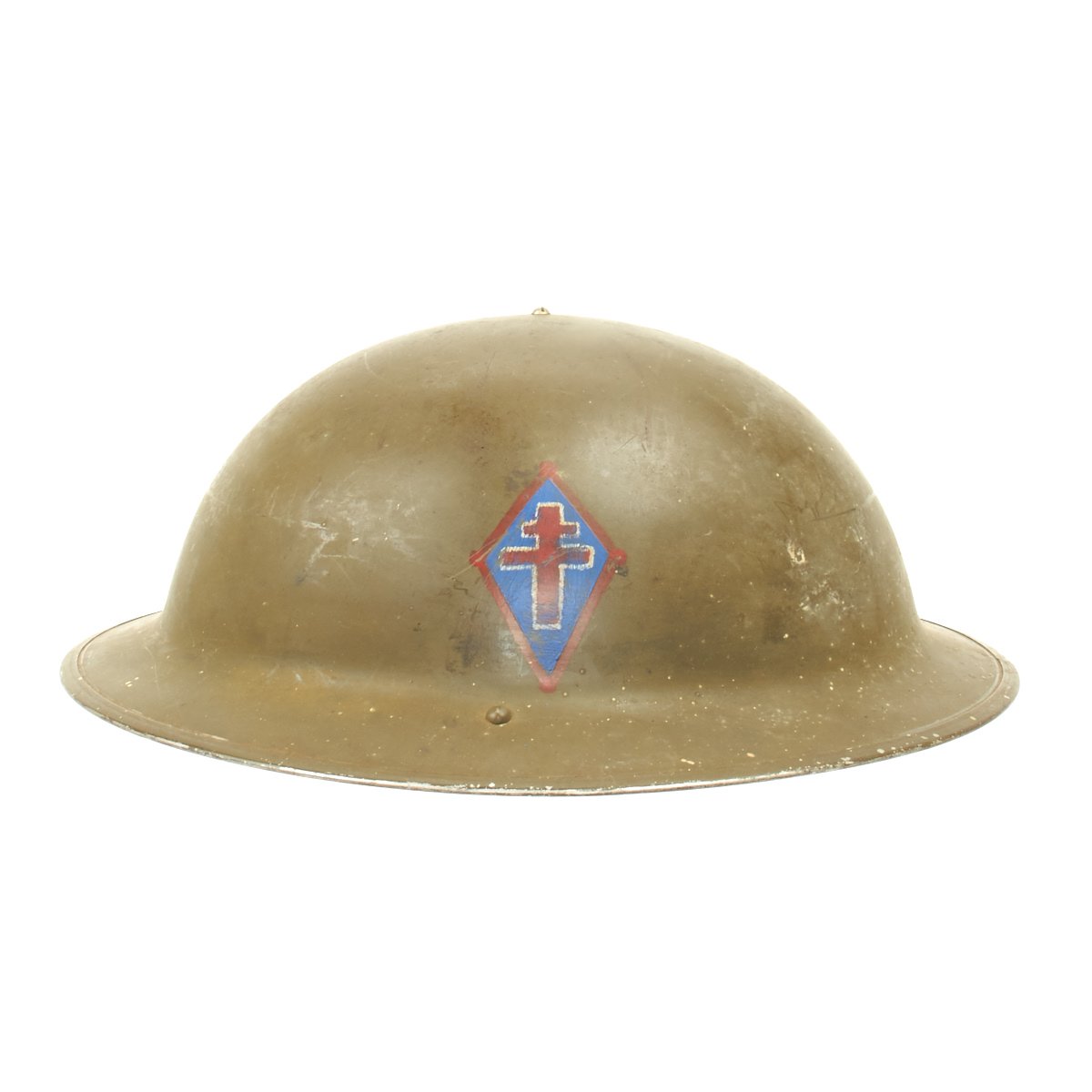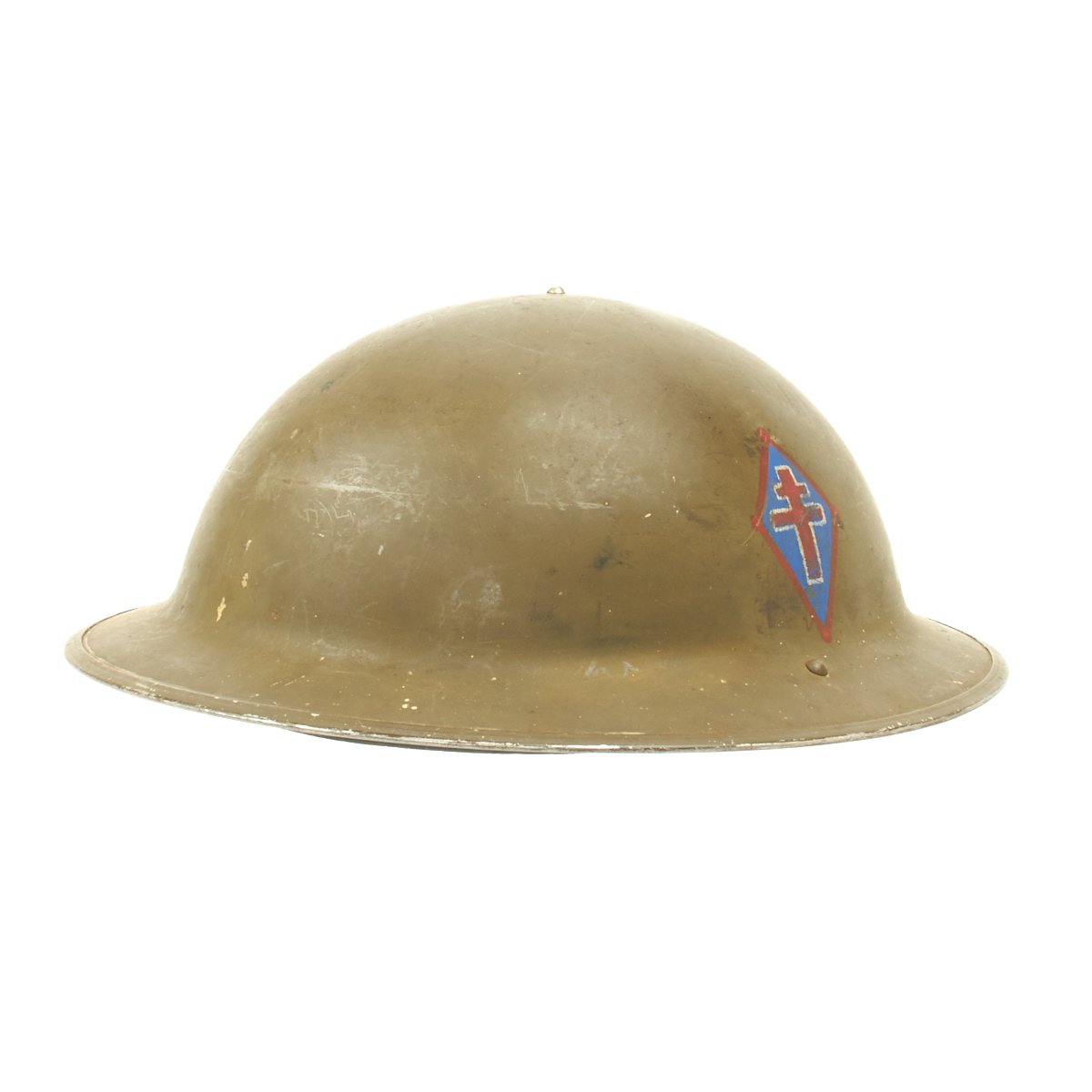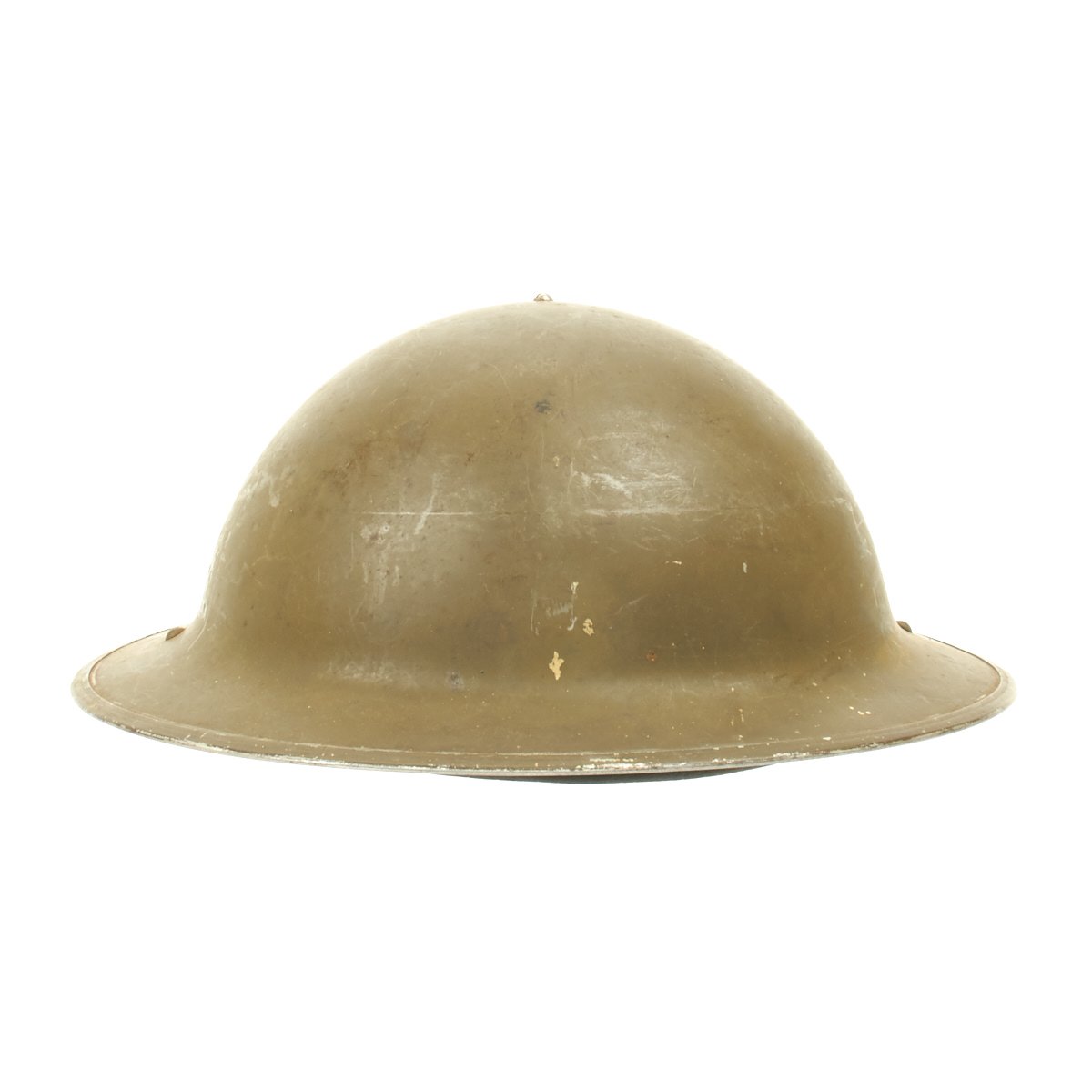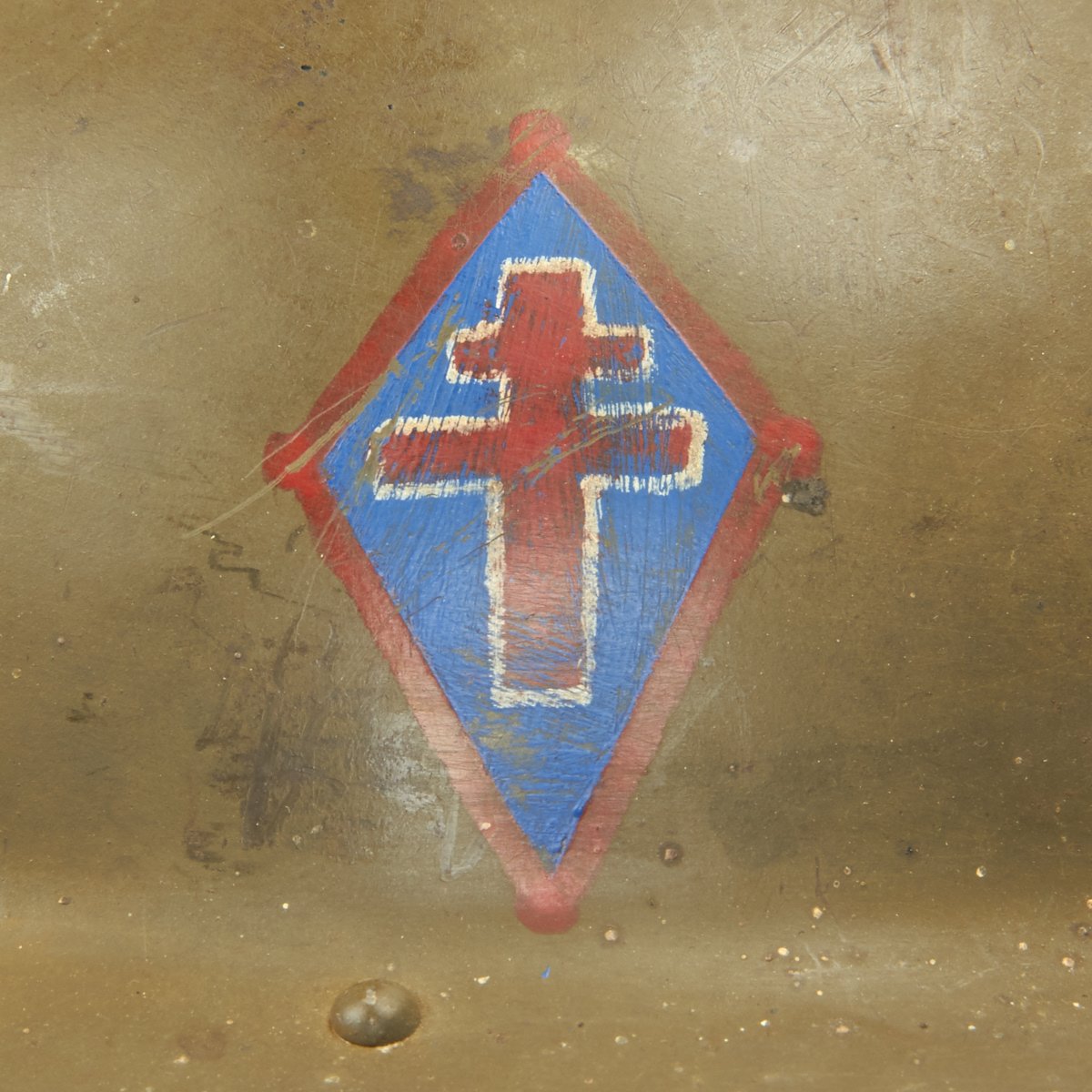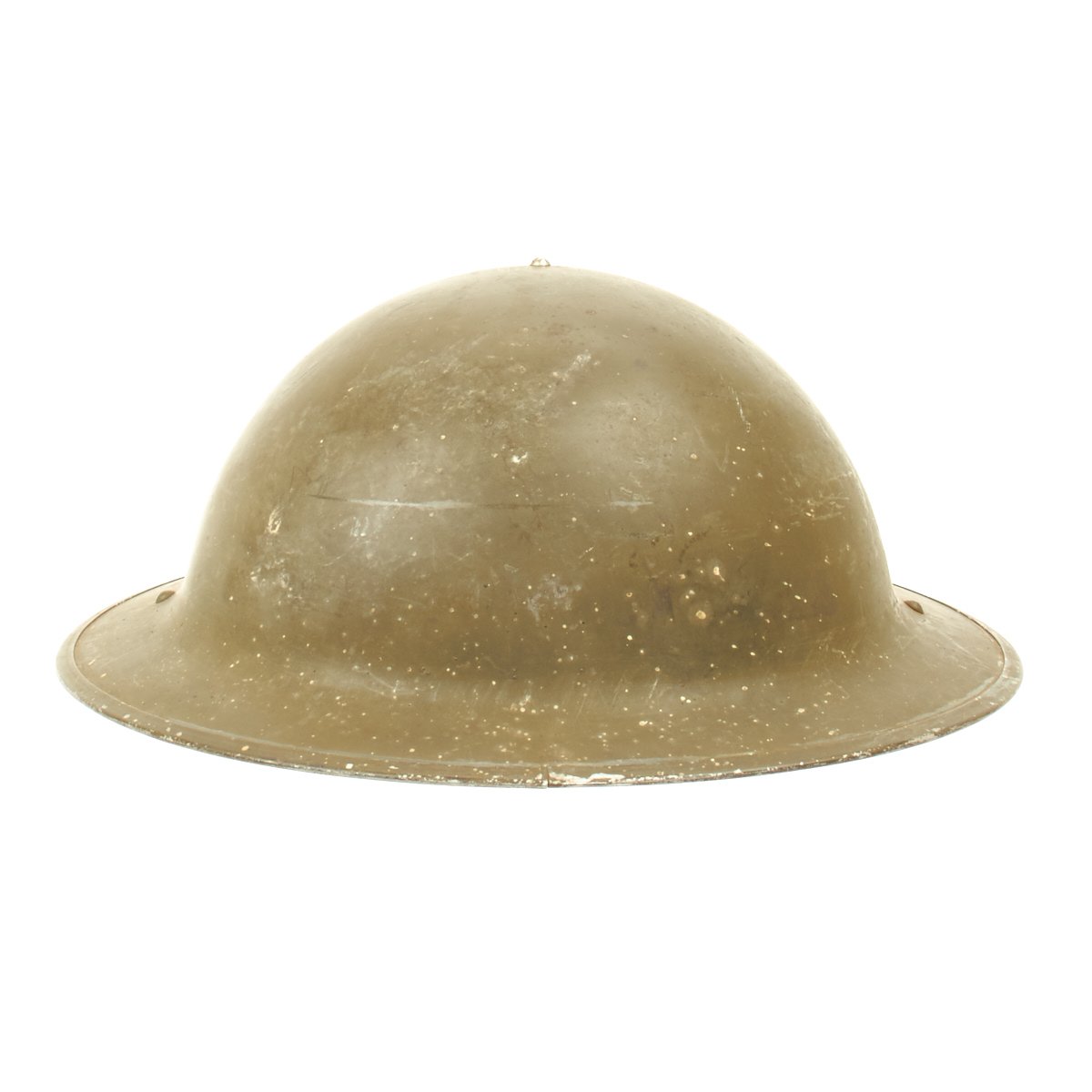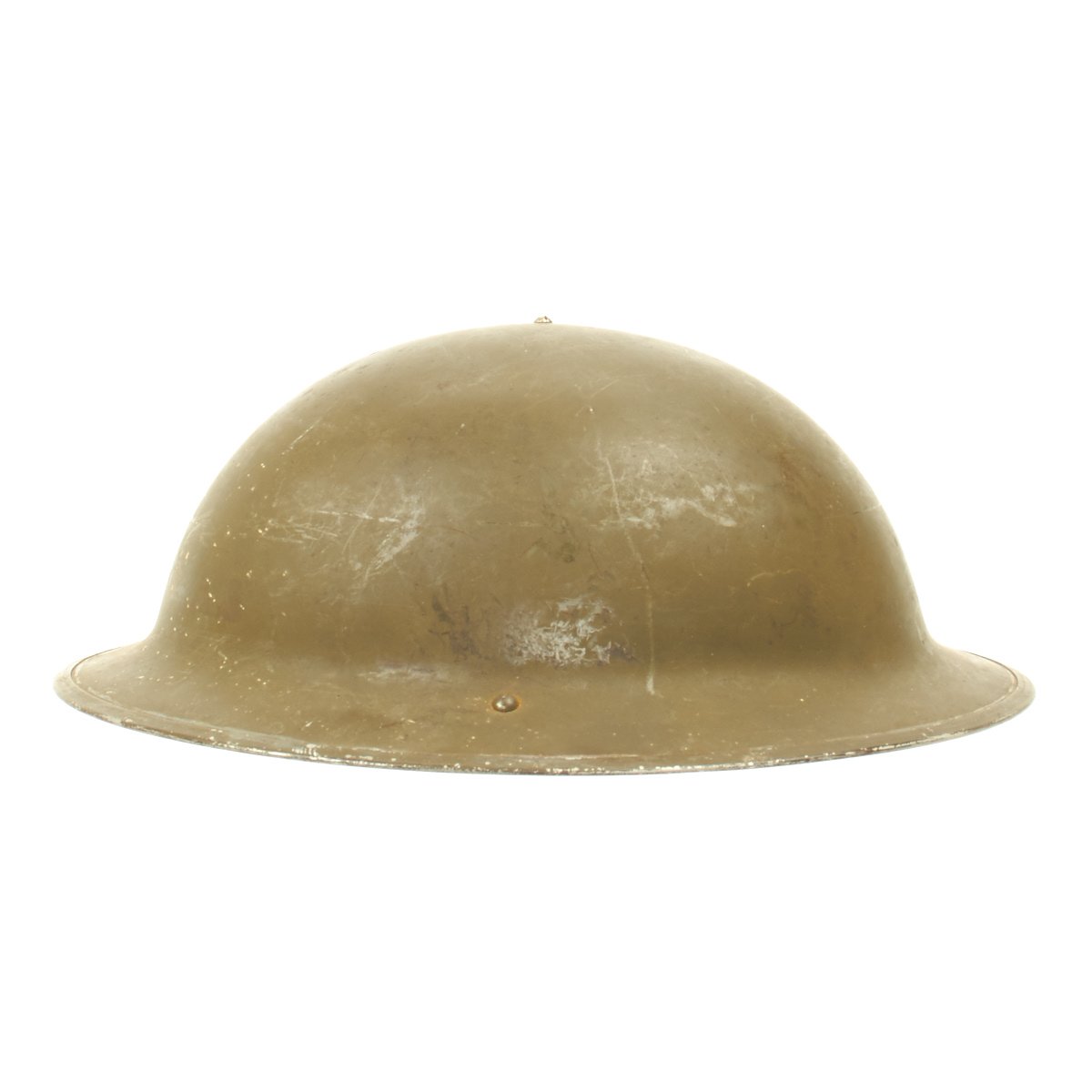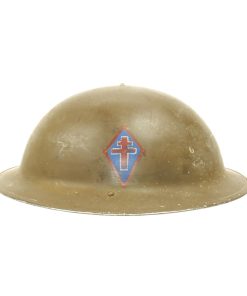Original Free French (Cross of Lorraine) Canadian WWII Brodie MkII Steel Helmet – Dated 1942 Original Items
$ 225,00 $ 90,00
Original Item: Only One Available. Free France and its Free French Forces (French: France Libre and Forces francaises libres) were the government-in-exile led by Charles de Gaulle during the Second World War and its military forces that continued to fight against the Axis powers as an Ally after the fall of France. It was set up in London in June 1940 and also organised and supported the Resistance in occupied France.
De Gaulle, a French government minister who rejected the armistice concluded by Marshal Philippe Petain and who had escaped to Britain, exhorted the French to resist in his BBC broadcast “Appeal of 18 June” (Appel du 18 juin), which had a stirring effect on morale throughout France and its colonies, although initially relatively few French forces responded to de Gaulle’s call.
On 27 October 1940, the Empire Defense Council (Conseil de defense de l’Empire) was constituted to organize the rule of the territories in central Africa, Asia and Oceania that had heeded the 18 June call. It was replaced on 24 September 1941 by the French National Committee. On 13 July 1942, “Free France” was officially renamed France combattante (“Fighting France”), to mark that the struggle against the Axis was conducted both externally by the FFF and internally by the French Forces of the Interior (FFI). After the reconquest of North Africa, this was in turn formally merged with de Gaulle’s rival general Henri Giraud’s command in Algiers to form the French Committee of National Liberation.
Exile officially ended with the capture of Paris by the 2nd Armoured Free French Division and Resistance forces on 25 August 1944, ushering in the Provisional Government of the French Republic. It ruled France until the end of the war and afterwards to 1946, when the Fourth Republic was established, thus ending the series of interim regimes that had succeeded the Third Republic after its fall in 1940.
The Free French fought Axis and Vichy regime troops and served on battlefronts everywhere from the Middle East to Indochina and North Africa. The Free French Navy operated as an auxiliary force to the Royal Navy and, in the North Atlantic, to the Royal Canadian Navy. Free French units also served in the Royal Air Force, Soviet Air Force, and British SAS, before larger commands were established directly under the control of the government-in-exile.
This is an exceptional example of a genuine Canadian Mark 1 steel helmet that is dated 1942 on the shell and 1941 liner. The stamping on the underside of the rim reads:
C.L./C 1942
56
The paint is in excellent. Original liner is in excellent condition and reads:
7 3/4
V.M.C
I
1941
The chin strap is absent.
The Free French (Cross of Lorraine) insignia is painted on the side of the helmet is blue and red and retains 95% of the original paint.
History of the Brodie helmet:
The Brodie helmet, called Helmet, steel, Mark I helmet in Britain and the M1917 Helmet in the U.S., is a steel combat helmet designed and patented in 1915 by Englishman John Leopold Brodie. Colloquially, it was called the shrapnel helmet, Tommy helmet, Tin Hat, and in the United States the doughboy helmet. Worn by Australians during WW2 and sometimes known as ‘Panic Hat’. It was also known as the dishpan hat, tin pan hat, washbasin, battle bowler (when worn by officers), and Kelly helmet. The US version, the M1917, was copied from the British Mk 1 steel helmet of 1916. The German Army called it the Salatschüssel (salad bowl).
At about the same time, the British War Office had seen a similar need for steel helmets. The War Office Invention Department was ordered to evaluate the French design. They decided that it was not strong enough and too complex to be swiftly manufactured. British industry was not geared up to an all-out effort of war production in the early days of World War I, which also led to the shell shortage of 1915.
A design patented in 1915 by John L. Brodie of London offered advantages over the French design. It was constructed in one piece that could be pressed from a single thick sheet of steel, giving it added strength.
Brodie’s design resembled the medieval infantry kettle hat or chapel-de-fer, unlike the German Stahlhelm, which resembled the medieval sallet. The Brodie had a shallow circular crown with a wide brim around the edge, a leather liner and a leather chinstrap. The helmet’s “soup bowl” shape was designed to protect the wearer’s head and shoulders from Shrapnel shell projectiles bursting from above the trenches. The design allowed the use of relatively thick steel that could be formed in a single pressing while maintaining the helmet’s thickness. This made it more resistant to projectiles but it offered less protection to the lower head and neck than other helmets.
The original design (Type A) was made of mild steel with a brim 1.52 inches (3851 mm) wide. The Type A was in production for just a few weeks before the specification was changed and the Type B was introduced in October 1915. The specification was altered at the suggestion of Sir Robert Hadfield to a harder steel with 12% manganese content, which became known as “Hadfield’s steel”, which was virtually impervious to shrapnel balls hitting from above.[6] Ballistically this increased protection for the wearer by 10 percent. It could withstand a .45 caliber pistol bullet traveling at 600 feet (180 m) per second fired at a distance of 10 feet (3.0 m). It also had a narrower brim and a more domed crown.
The original paint scheme, suggested by Brodie, was a mottled light green, blue, and orange camouflage but they were also painted in green or blue-grey. That same month the first delivery of the helmets was made to British Army troops. Initially, there were far from enough helmets to equip every man, so they were designated as “trench stores”, to be kept in the front line and used by each unit that occupied the sector. It was not until the summer of 1916, when the first one million helmets had been produced, that they could be generally issued.
The Brodie helmet reduced casualties but was criticized by General Herbert Plumer on the grounds that it was too shallow and too light-reflective, its rim was too sharp, and its lining was too slippery. These criticisms were addressed in the Mark I model helmet of 1916, which had a separate folded rim, a two-part liner and matte khaki paint finished with sand, sawdust, or crushed cork to give a dull, non-reflective appearance. In 1917, the liner was modified to include a rubber cushion to make it more comfortable, although this was not adopted for the M1917. Towards the end of the war, helmets were often painted with unit insignia. These are often called “parade helmets” by collectors.
Fast Shipping with Professional Packaging
Thanks to our longstanding association with UPS FedEx DHL, and other major international carriers, we are able to provide a range of shipping options. Our warehouse staff is expertly trained and will wrap your products according to our exact and precise specifications. Prior to shipping, your goods will be thoroughly examined and securely secured. We ship to thousands clients each day across multiple countries. This shows how we're dedicated to be the largest retailer on the internet. Warehouses and distribution centres can be located throughout Europe as well as the USA.
Note: Orders with more than one item will be assigned a processing date depending on the item.
Before shipping before shipping, we'll conduct a thorough inspection of the items you have ordered. Today, the majority of orders will be delivered within 48 hours. The delivery time will be between 3-7 days.
Returns
The stock is dynamic and we cannot completely manage it because multiple stakeholders are involved, including our factory and warehouse. So the actual stock may alter at any time. It's possible that you may not receive your order once the order has been made.
Our policy is valid for a period of 30 days. If you don't receive the product within 30 days, we are not able to issue a refund or an exchange.
You can only return an item if it is unused and in the same state as the day you received it. You must have the item in its original packaging.
Related products
Uncategorized
Uncategorized
Armoured Fighting Vehicles of the World: AFVs of World War One (Hardcover Book) New Made Items
Uncategorized
Uncategorized
Uncategorized
Uncategorized
Armored Burgonet Helmet & Polearm from Scottish Castle Leith Hall Circa 1700 Original Items
Uncategorized
Uncategorized
Uncategorized
Uncategorized
Uncategorized
Angolan Rebel 1970s era 60mm Inert Display Mortar from Angolan Civil War Original Items
Uncategorized
Uncategorized
Uncategorized
Uncategorized
Uncategorized
Uncategorized
Uncategorized
